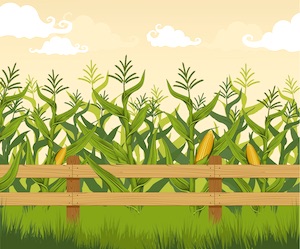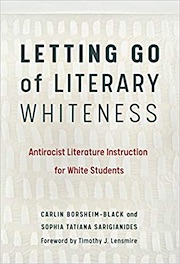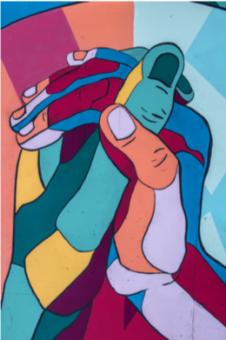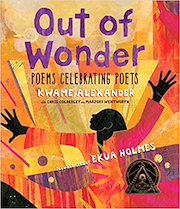Toward a More Diverse and Inclusive Classroom
A MiddleWeb Blog
 It’s been one heck of a year for education. Like many individuals, I am mentally and physically exhausted. It takes a lot for me to get through the end of a day of teaching.
It’s been one heck of a year for education. Like many individuals, I am mentally and physically exhausted. It takes a lot for me to get through the end of a day of teaching.
Pandemic aside – teachers, administrators, and paraprofessionals are facing growing numbers of students who have become ruder, have poor work ethic, just don’t care, and are becoming more divided. And the systematic racism is becoming more visible. This year I have dealt more with students who have been downright racist and prejudiced towards others.
For instance, students feel that after listening to music with racist lyrics it is acceptable to repeat those lyrics. I have also dealt with a student who felt it was acceptable to call a gay student a “flamer.”
Are students becoming more prejudiced and racist, or have students always been this way? I don’t feel I am being naive when I say I am not sure. I feel the media – and social media tools – have played a huge role in dividing people. More importantly, I think my “lenses” through which I see the world are becoming more clear. I’m more aware; I notice more.
Seeing racism and prejudice more clearly has made me sit back and reflect on my own teaching as I continue to reinvent what it is I do daily to promote equal opportunities for everyone to be heard, learn, and be successful in school.
Whether it be through conversations, projects, or exposing students to more diverse texts, I will continue to do what it takes to prevent the spread of racism and prejudice that may exist in our classrooms.
White and Rural
There is no doubt my school is predominately white. I have been teaching in a small rural district for the better part of 20 years. It is a conservative community. Most parents and guardians work on local farms or commute to neighboring communities for employment.

Over the course of the last three years, less than 3% of our student population has been Black. I currently have three Black students in two classes. All our teaching staff is white, and we have two paraprofessionals of Native American descent.
In my opinion we haven’t done a very good job of teaching our students about being accepting of others and why it is not okay to treat others poorly based on race, creed, sexual orientation, etc. Is it getting better? Yes. We have a rough road ahead, but I can confidently say there are continuing efforts within my district to work towards positive changes.
New Beginnings
The focused effort to making our district more inclusive started two years ago when I attended the National Council of Teachers of English (NCTE) Annual Convention. I attended sessions where presenters gave me ideas on how to be more inclusive in my classroom and to create a classroom that celebrated every writer and author, not just the white ones.
I took these ideas and strategies back to my department when I returned from the convention. My department agreed there definitely should be more diverse texts across grade levels. We focused our discussion on Black authors and stories where there were strong non-white main characters. Furthermore, we discussed strong female characters as well in books.
Below is a beginning list of books we thought would be beneficial in creating a more diverse curriculum in our classroom:
The Hate U Give by Angie Thomas
- Long Way Down by Jason Reynolds
- The Boy in the Black Suit by Jason Reynolds
- The Crossover by Kwame Alexander
- Out of Wonder: Poems Celebrating Poets by Kwame Alexander, Chris Colderley, and Marjory Wentworth
- Speak by Laurie Halse Anderson
- Anne Frank: The Diary of a Young Girl by Anne Frank (In our existing curriculum)
- Roll of Thunder, Hear My Cry by Mildred D. Taylor (In our existing curriculum)
This was just the beginning of our conversation. So please understand, there are plenty of others that are being added to our list (including Latinx authors – suggestions welcomed!) and by no means are we perfect. My colleagues and I are trying, and we continue to learn every day about ways to fill our classrooms and libraries with more diverse texts.

Start With a Conversation
I knew I had to include more diverse texts into my classroom and curriculum. I also knew I had to make a continuous, fully conscious effort to assure ALL students have a voice in my classroom, in my school, and in society.
I am always very open and honest with my students and try to present a welcoming environment in my classes. Furthermore, in my English classes and in the media literacy class I teach, I go over with students how their voice always matters and how to express their voice in meaningful, respectful and effective ways.
A great resource that I feel every teacher should read is Ibram X. Kendi’s How to be an Antiracist. This book can help anyone who is troubled by the inequalities and struggles with what to do about it. This year – despite having to do remote learning and experiencing completely restructured class schedules – I can say with confidence my students feel they can talk freely with me and approach me about anything. There is an open community in my classroom.

I have asked my students many questions to help me be a better teacher – and help our school become a better place to learn and take part in as a community member. For instance, I have asked my students:
“What else can be done in our school to make sure all students are included with fairness and equity?”
“What problems exist within our school that can cause a student’s right to learn to be jeopardized?”
“Is Mr. Hyler doing enough to make sure I am not favoring one group over another?”
“How should students be disciplined who make prejudiced comments or take prejudiced actions against others?”
These questions are just the tip of the iceberg, but they are leading us to have discussions that teach me students don’t want to be scared anymore. They want issues to be handled swiftly and fairly. Most importantly, they just want to be heard in our classrooms, schools and communities. There is nothing more disturbing to me than knowing students don’t feel safe, and they won’t feel safe if they don’t have a full voice, especially in their own school and community.
Only a Start
By no means do I feel I am doing enough or we are yet doing enough in our school. It is going to take a lot of work from everyone to change the landscape of education when it comes to racism and prejudice.
I do feel I have taken important steps to assure I am a teacher who is committed to inclusion and equity. As an ELA and media literacy teacher, I am celebrating every author who has a valuable message to share or a good story to tell, with my antiracist, anti-predjudice lenses in place.
Lasting change will take time in my rural, mostly white community, but making the effort each day to reflect and learn about what we can do to reverse systemic racism will mean we are taking things seriously. It is our responsibility to reinvent our curriculum as well as our instructional practices to help ALL students succeed.
Finally, I feel it is important to conclude by saying there is no such thing as a perfect teacher. We always need to be willing to learn, grow, reflect, and evolve for all to have a chance. And I genuinely welcome your advice.



































